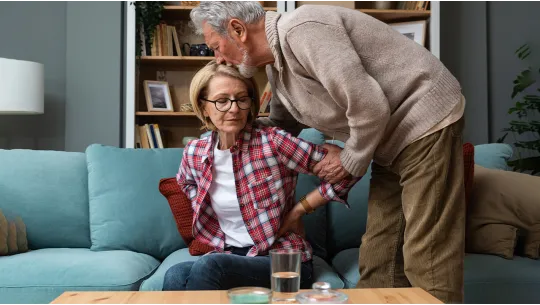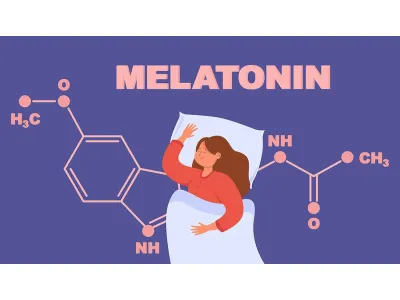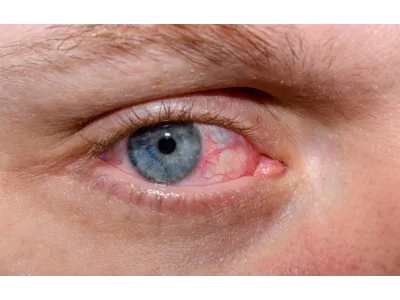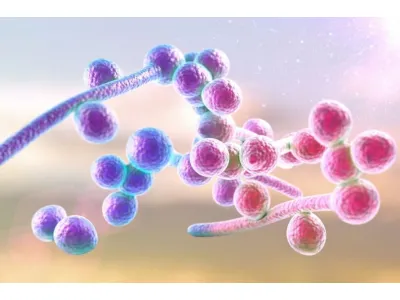Non-Toxic and Gentle Wound Care Solutions for All Ages

Effective wound care is essential to promote healing and prevent infection, regardless of age. From minor cuts and scrapes to more serious injuries, proper wound care is essential to maintaining our health. There are many wound care solutions available to meet the needs of infants, children, adults and the elderly. These solutions range from basic first aid to advanced therapies designed to support the body's natural healing processes to facilitate recovery.
Types of Wounds
Wounds come in many forms, each of which requires special care to promote healing and prevent complications. Different types of wounds such as cuts, scrapes, burns and surgical incisions need to be understood for effective treatment and recovery.
Cuts (lacerations)
Cuts, also known as lacerations, are wounds caused by sharp objects such as knives, glass, or metal. They lead to a break in the skin, which varies from superficial to deep.
Cuts vary in length, depth and severity. They often have clean edges if they are caused by a sharp object, but may have jagged edges if the skin is torn unevenly. Common causes are accidents in the kitchen, handling sharp instruments or breaking glass. Cuts can also result from falls or collisions that severely tear the skin.
- Care and Treatment: Clean the wound with mild soap and water to remove dirt and debris. Apply pressure to stop any bleeding. Band-aids are sufficient for minor cuts. Deeper cuts may require stitches, staples, or adhesive strips to close the wound and promote healing.
To prevent infection, apply an antiseptic ointment or gel and cover the wound with a sterile bandage. One of the effective antiseptic gels is Granudacyn Gel, which promotes rapid healing of wounds. Granudacyn contains hypochlorous acid, which is a natural antimicrobial agent that helps prevent infection and strengthen the immune system.
Granudacin Wound Gel also contains a superoxide solution that helps stabilize hypochlorous acid and further enhance its antimicrobial properties. These ingredients combine to create an effective, safe and fast-acting wound gel that can be used on a wide range of wounds, including burns, cuts and grazes.
Scratches (garden)
Scratches or chafing occur when the top layer of skin is rubbed or scraped off, often exposing the underlying tissue. These sores usually appear raw and red, with a rough texture. They can occupy a large area and a clear liquid can ooze from them. Scratches are usually caused by falling or slipping on rough surfaces such as pavement or gravel. Sprains often occur in sports such as cycling, skateboarding, or soccer.
- Care and Treatment: Clean the wound gently with mild soap and water to remove dirt and prevent infection. Avoid rubbing the wound as this may cause further irritation. Apply an antiseptic ointment and cover the wound with a sterile non-stick bandage.
Burns
Burns are damage to the skin and underlying tissues caused by heat, chemicals, electricity, or radiation. Depending on the severity, they are divided into three degrees:
- First-degree burns: affect only the outer layer of the skin (epidermis). Symptoms include redness, pain, and mild swelling.
- Second-degree burns: affect the epidermis and part of the dermis (the second layer of the skin). Symptoms include severe pain, redness, swelling and blisters.
- Third-degree burns: penetrate the entire thickness of the skin and affect the underlying tissues. These burns can appear white, blackened, or charred, and are often painless due to nerve damage.
- Care and Treatment: To treat first-degree burns, cool the burn area with running water for several minutes. Apply aloe vera gel or moisturizer and, if necessary, cover with a sterile dressing.
- Second degree burns: carefully clean the location with water. Do not pop the blisters. Apply antibiotic ointment and cowl with a non-stick sterile dressing. Seek clinical attention for large burns or burns on touchy regions consisting of the face or joints.
- Third degree burns: See a physician straight away. Do not use water or any topical treatments. Cover the burn area with a clean, dry cloth to prevent contamination until professional help arrives.
Surgical incisions
Surgical incisions are intentional incisions made all through surgical operation to get entry to inner tissues or organs. They are usually closed with stitches, staples or adhesive strips. These wounds are usually straight and precise, with clean edges.
- Care and Treatment: Follow your surgeon's instructions cautiously. Keep the incision site clean and dry. Avoid strenuous activity which can place pressure on the wound. Watch for signs of infection, inclusive of increased redness, swelling, or drainage. Attend all follow-up appointments to ensure proper healing, and tell your doctor right now when you have any problems, along with severe ache or signs of infection.
Non-Toxic Wound Cleaning Solutions
Non-toxic wound cleansing solutions are designed to be gentle at the skin and surrounding tissue. This minimizes the chance of irritation or hypersensitive reactions, making them suitable for every age, which includes children and people with sensitive skin. These solutions do not contain harsh chemical substances or additives that can probably motivate damage, making them safer for frequent use.
Non-toxic antiseptics have robust antimicrobial properties that help do away with microorganisms, viruses and fungi from the wound site, reducing the chance of infection. By keeping the wound clean and free of pathogenic microorganisms, these solutions create an optimal environment for natural healing processes.
Common non-toxic antiseptics
- Hydrogen Peroxide (H2O2): A widely used antiseptic known for its bubbling action on contact with organic materials, which helps remove particles from the wound. It has strong antimicrobial residences and is effective towards a wide range of bacteria and viruses.
Application: before applying to the wound, dilute hydrogen peroxide to a attention of three%. It is best used for initial cleaning to dispose of dust and particles. Long-time period use isn't advocated as it is able to intervene with recuperation because of damage to healthful tissue.
- Chlorhexidine gluconate: an effective antiseptic with a wide spectrum of antimicrobial action. It is commonly used in medical facilities for skin disinfection. It is effective towards micro organisms, fungi and a few viruses, making it a great desire for preventing wound infections.
Application: use a diluted answer of chlorhexidine gluconate to clean the wound. It can be applied using a sterile tampon or gauze pad. Avoid the use of it on deep wounds or regions near the eyes and ears.
- Hydrochloric acid: A weak acid shaped whilst chlorine dissolves in water. It is naturally produced by means of white blood cells inside the human frame as part of the immune response to combat pathogens. HOCl is very powerful against a wide variety of microorganisms, including bacteria, viruses, fungi, and spores. It destroys the cell membranes and proteins of those pathogens, rendering them inactive and stopping contamination.
Application: Apply the HOCl solution directly to the wound with a spray or flush the wound with a syringe. Granudacyn Wound Irrigation Solution is a powerful spray containing hypochlorous acid. Granudacyn Wound Wash Spray is available in a 250ml bottle, making it ideal to be used in hospitals, clinics and at home. The easy-to-use spray nozzle ensures accurate application of the solution to the affected place without causing discomfort or pain.
Granulesudacyn wound irrigation solution 15 spray 250 ml
Granudacyn 15 Wound Irrigation Solution Spray 250ml The Granudacyn 15 Wound Irrigation Solution Spray is a powerful wound cleaning solution that effectively removes dirt, debris, and bacteria from your wounds. It contains 0.15% hypochlorous acid, which is a potent antimicrobial agent that can help prevent infections and promote wound healing. The Granudacyn 15 Wound Irrigation Solution Spray comes in a 250 ml bottle, making it perfect for use in hospitals, clinics, and at home. Its easy-to-use spray nozzle ensures that the solution is delivered precisely to the affected area without causing any discomfort or pain. The Granudacyn 15 Wound Irrigation Solution Spray is suitable for use on all types of wounds, including cuts, burns, and scrapes. It helps to remove dead tissue, promote cell growth and development, and provide a moist environment for wound healing. In addition to its powerful wound cleaning properties, the Granudacyn 15 Wound Irrigation Solution Spray is also non-toxic, non-irritating, and chemically stable. It does not contain any alcohol, antibiotics, or steroids, making it safe to use for people of all ages, skin types, and medical conditions. Whether you're at home or on the go, the Granudacyn 15 Wound Irrigation Solution Spray is a must-have for anyone looking to promote faster wound healing and prevent infections. Try it today and experience the difference for yourself. ..
366.48 USD
- Tea tree oil: a herbal antiseptic obtained from the leaves of the Melaleuca alternifolia tree. It has long been used because of its antimicrobial homes. It is effective against various bacteria and fungi and has anti-inflammatory residues that are a useful resource in wound recovery.
Application: Dilute tea tree oil with a carrier oil (such as coconut oil) earlier than applying to the wound to avoid skin irritation. Apply a small quantity to the wound with a clean cotton or gauze swab.
Disclaimer: The article carries information about non-toxic wound care products and does not represent medical recommendations. Always consult your physician with any questions on wound care.
M. Wüthrich











